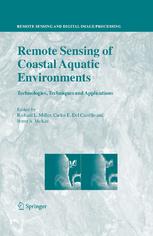

Most ebook files are in PDF format, so you can easily read them using various software such as Foxit Reader or directly on the Google Chrome browser.
Some ebook files are released by publishers in other formats such as .awz, .mobi, .epub, .fb2, etc. You may need to install specific software to read these formats on mobile/PC, such as Calibre.
Please read the tutorial at this link: https://ebookbell.com/faq
We offer FREE conversion to the popular formats you request; however, this may take some time. Therefore, right after payment, please email us, and we will try to provide the service as quickly as possible.
For some exceptional file formats or broken links (if any), please refrain from opening any disputes. Instead, email us first, and we will try to assist within a maximum of 6 hours.
EbookBell Team

0.0
0 reviewsCoastal waters are important ecological systems and vital assets for many nations. Coastal waters are also complex, dynamic environments where a vast array of coupled biological, chemical, geological, and physical processes occurs over multiple time and space scales. The optical environment of coastal waters is particularly complex. There is considerable interest in studying coastal waters to gain a better understanding of earth system processes for climatic change research or environmental factors for management decisions. Consequently, there is a need for robust, effective technologies and methods for studying these important complex environments.
Remote sensing from aircraft and space-based platforms offers unique large-scale synoptic data to address the intricate nature of coastal waters. However, many researchers wishing to apply remote sensing to a dynamic coastal environment are faced with the challenge of learning a technology laden with new and often confusing terminology, data, and methods of processing and analysis. To gain an adequate understanding of remote sensing generally involves scouring countless technical manuals, reports, and scientific papers. Hence the major goal of writing this work was to produce a comprehensive resource for those involved in various studies of coastal aquatic environments. With its primary focus on optical remote sensing using passive instruments, the editors have indeed succeeded in creating a book the scientific community has been waiting for.